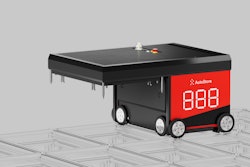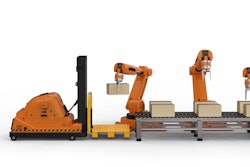
ProGlove
Less than half (45.6%) of warehouse and logistics leaders see automation as necessary over the next five years, according to new research from ProGlove.
“For many organizations, automation will be a necessary step to improve productivity, but it is not a silver bullet,” says Stefan Lampa, robotics pioneer and CEO of ProGlove, “This research highlights serious blockers preventing many leaders from rolling out the technology. In any case, it must be implemented to address the specific needs of each individual business, rather than automation for its own sake.”
Key takeaways:
- Research found that just over one-third (36.1%) are currently deploying warehouse automation technology. Only 16.3% successfully introduced warehouse automation within the last two years, showing the early stages of increasing adoption. An additional 30% say they are currently undertaking automation projects.
- However, over one-third (36.9%) are not currently utilizing automation. The remaining 27% are considering implementing the technology. Therefore, it is unlikely that automation will completely replace human workers any time soon.
- When asked about barriers to implementation within their organizations, the leading issue facing 28.3% of leaders is a lack of automation expertise to carry out projects. Almost a quarter (24.5%) noted integration difficulties in their current warehouse environment. In addition, 22% struggle with internal resistance, 21% said support and maintenance is an insurmountable issue, and 22% don’t have time to train people. Finally, 18% claim automation is too complicated to implement across the business. In total, only a fifth of respondents said they had no organizational barriers to automation implementation.
- 40.6% of respondents have yet to attempt to introduce automation, while 11.8% have delayed projects. In fact, more leaders are certain of investments in semi or partially-automated systems (47.4%), artificial intelligence (AI) (48.4%), and industry wearables (41.9%) than full automation (31.6%).
















![Pros To Know 2026 [color]](https://img.sdcexec.com/mindful/acbm/workspaces/default/uploads/2025/08/prostoknow-2026-color.mduFvhpgMk.png?ar=16%3A9&auto=format%2Ccompress&bg=fff&fill-color=fff&fit=fill&h=135&q=70&w=240)



